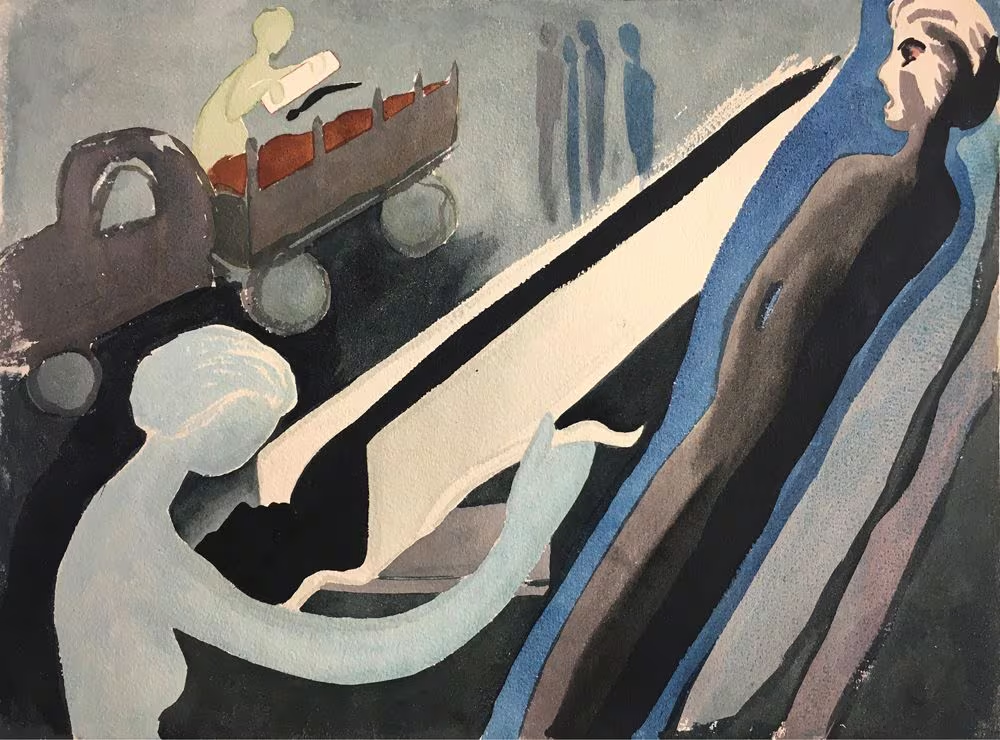In a world that moves at the speed of the latest social media trend, the quaint town of Escazú in Costa Rica holds within its quiet streets and rolling hills a story that seems to have slipped through the cracks of collective memory. This is the tale of Margarita Bertheau, a luminary in the world of watercolor painting, whose final resting place has become as elusive as the recognition for many artists in a country that seems to have misplaced its cultural compass.
A Quest for Remembrance
Forty-eight years ago, on a rain-drenched November day, a simple cross marked the eternal dwelling of Margarita Bertheau. It was a symbol of finality for a life dedicated to the arts, surrounded by students and admirers in the same town she adored and painted. Fast forward to the present, and the quest to find this marker turned into a poignant realization: the cross, much like the memory of Bertheau herself, had vanished.
Escazú: A Town That Forgot
Escazú, once a hub of artistic inspiration and a place Bertheau held dear, seems to have turned its back not just on her legacy but on its own vibrant history. The search for any sign of Bertheau or even a nod to her contributions yields nothing but a reflection on a country’s fleeting memory. In a municipality devoid of records or plaques commemorating its artists, the silence speaks volumes.
Margarita Bertheau: The Watercolor Legend
Despite the physical absence of markers, the spirit of Margarita Bertheau lives on through the generations of students she mentored. Known affectionately as “the Bertheau” among peers, her mastery over watercolor painting and her passion for capturing the essence of Escazú’s landscapes left an indelible mark on Costa Rican art.
Her teachings went beyond technique, fostering a deep appreciation for rural life and its inhabitants. Through her eyes and her art, Bertheau’s students learned to see the beauty in the everyday, to blend colors in ways that breathed life into their canvases, and to cherish the natural landscapes that were an integral part of their artistic journey.
The Technique That Defined a Generation
Bertheau’s emphasis on the purity of watercolor, the meticulous preparation of paper, and the rejection of black pigment in favor of mixed shades and layers, set a standard that many aspired to emulate. Her approach was not just about painting; it was a philosophy that married the complexity of technique with the simplicity of observing the world.
A Legacy Rediscovered
The realization that Bertheau’s final resting place was moved without notice to an unmarked grave in the General Cemetery is a somber reflection on the fleeting nature of remembrance. Yet, in seeking her out, one finds that Margarita Bertheau’s essence is not bound by a grave or a plaque, but is alive in the red hues of the poró trees, the myriad greens of the landscape, and the vibrant life that continues to inspire artists in Escazú and beyond.
The Unforgotten Spirits of Escazú
In the end, the search for Margarita Bertheau reveals more than the forgotten tomb of a revered artist; it uncovers a narrative about the challenges of preserving cultural heritage in a rapidly changing world. While physical memorials may fade or be misplaced, the legacy of artists like Bertheau persists in the lessons passed down, the art created, and the beauty seen in the ordinary.
In a country where memory seems as fleeting as the afternoon clouds, let us not forget the artists who shaped our perspectives, taught us to see beauty in our surroundings, and left an indelible mark on our cultural landscape. Margarita Bertheau, and many like her, may not have plaques in their honor, but their legacy is etched in the heart of Costa Rican artistry.

